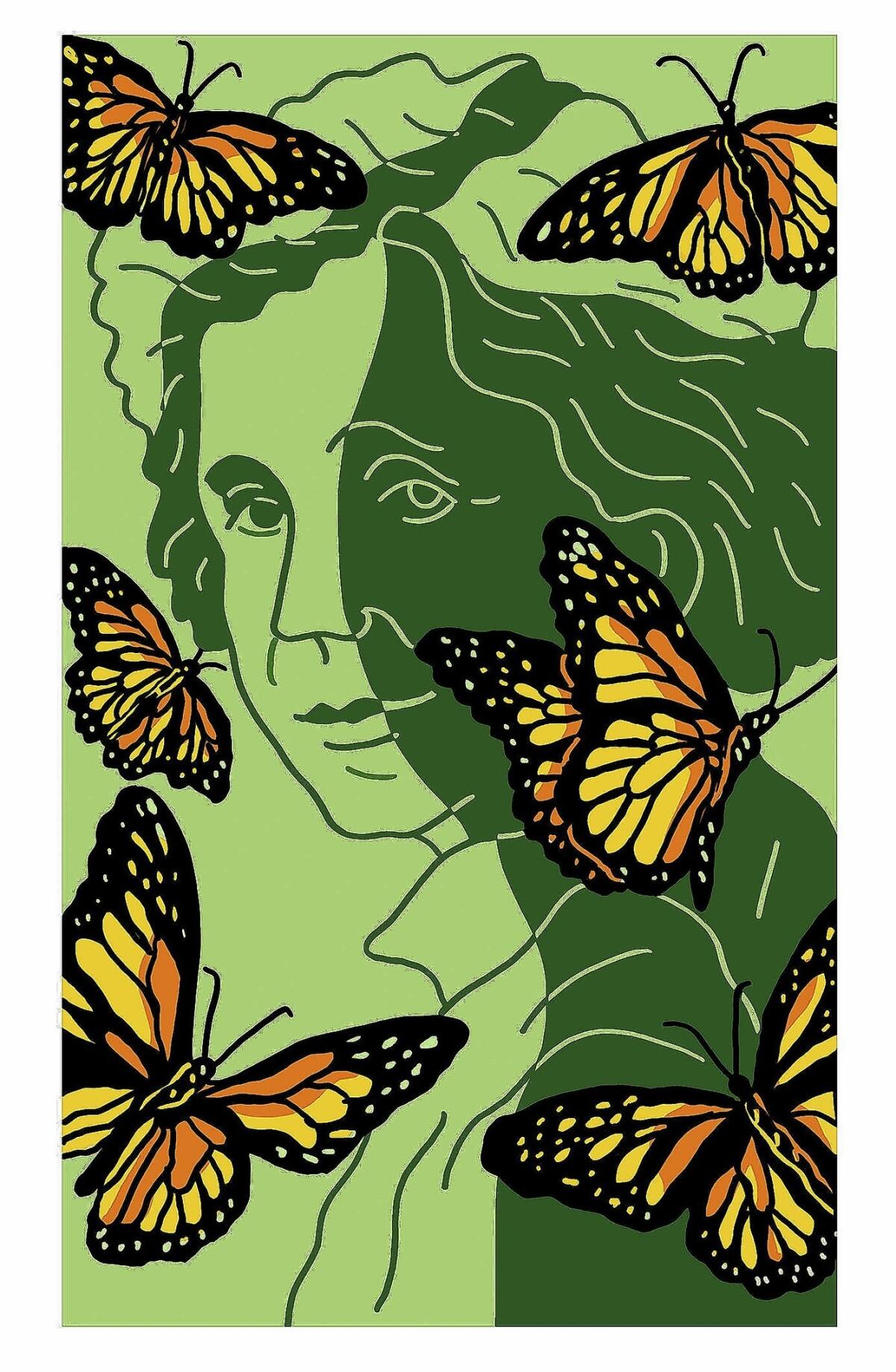Monarchs, milkweed and the spirit of Rachel Carson

- Share via
“But most of all I shall remember the monarchs, that unhurried westward drift of one small winged form after another, each drawn by some invisible force.”
— Rachel Carson, in a letter to Dorothy Freeman, Sept. 10, 1963.
After news broke recently that the number of migratory monarch butterflies that had arrived to winter in Mexico was the lowest since reliable records began, I went on the road on behalf of the Make Way for Monarchs initiative. This solutions-oriented collaboration is working to place millions of additional milkweeds in toxin-free habitats this next year. Why? Monarchs cannot live without milkweeds, and milkweeds are disappearing.
In Pittsburgh, after the crowd listened to me outline the problem and the solution (restoring milkweeds and other wildflowers in healthy farm-scapes), a quiet man approached me with a smile. He wished to remind me that today’s struggle to help monarchs has deep precedents.
“I’m sure you know that Rachel Carson’s birthplace is just down the road from Pittsburgh at Springdale,” he said, “and that she went to school at Chatham just a few blocks from here when it was called Pennsylvania Female College. If it wasn’t for her, so many other lives would have already vanished from this Earth.”
I thought to myself, “Of course: One more for Rachel.”
Carson’s 1962 book, “Silent Spring,” didn’t just kick-start the modern environmental movement, it also suggested that better protection for pollinators and plant life was required for healthy people and healthy agriculture. Without her intelligence and eloquence, we would already be living in a world of unspeakable impoverishment, one with silent springs and fruitless falls.
Carson was a quiet, unerringly private, modest person. And yet, as a moral voice and a skilled scientist, she challenged U.S. agriculture to confront its devastating addiction to the pesticide DDT.
Carson meticulously documented the consequences of untargeted chemical use on pollinators, songbirds and humans. She made giant waves, catalyzing changes in agricultural practices and government oversight that fostered greater social responsibility.
When the giants of the pesticide industry dismissed evidence that their chemicals caused harm, she stood her ground and shot holes in their stories. When the industry ruthlessly attacked her science and her character, Carson did not flinch.
Carson refused to bring her own breast cancer into the discussion, for fear that she would be disregarded as having “subjective motives.” Whether or not her cancer was related to environmental contaminants, she was sure that the damage done to so many other lives was ample enough for requesting changes in agribusiness-as-usual.
Now consider today’s risks to monarchs and farmers. Millions of acres are planted in corn and soybean crops bred for herbicide tolerance, which allows a glyphosate weedkiller to be applied wholesale. Weeds, including milkweeds, are indeed suppressed, but the untargeted use of such blunt tools can do more harm than good. A dozen herbicide-tolerant superweeds (none of them milkweeds) are surviving, which puts financial pressure on farmers to spray five times more weedkiller than a decade ago.
The collateral damage is that Midwestern farmlands suffered a 58% decline in milkweeds — and an 81% decline in monarchs from 1999 to 2012.
There is a better way. Farmers like Paul Kaiser of Singing Frogs Farm, in Sebastapol, Calif.; Richard Rant in West Olive, Mich.; and John and Nancy Hayden of the Farm Between in Jeffersonville, Vt., are creating abundant habitat for pollinators in concert with their crops, planting green “filter strips” and hedgerows next to their high-quality fruits and vegetables. Other farmers concede that where herbicides are necessary, they can be used in more targeted ways.
“Saving monarchs is about more than monarchs,” says Chip Taylor, the executive director of Monarch Watch based at the University of Kansas. “It’s saving all the species with whom they share the same habitats, especially the pollinators whose service provides the food for other species.”
We will need more than just a few pollinator-friendly farms. Milkweed habitat must be restored across entire corridors, from the Midwest to central Mexico, and from the inter-mountain West to coastal California, where this year’s monarch numbers are up slightly but far lower than a decade ago.
Last week, Canada, the U.S. and Mexico agreed to work together toward monarch recovery. President Enrique Peña Nieto’s party introduced a bill in the Mexican Senate to create a tri-national toxin-free corridor; similar legislation is being prepared in the U.S.
This spring, conservation organizations such as Monarch Watch, the Xerces Society, Cal Poly’s Monarch Alert and the Southwest Monarch Study will put out millions of milkweed seedlings — along roads, on railroad and transmission-line right-of-ways and in school gardens, farms and yards across the U.S. You can join with other citizen-scientists by planting native milkweeds and counting monarch larvae on them this summer, or by tagging adult monarchs into the fall.
Collectively, we must be as strategic and courageous as Carson was in the 1960s. We must inspire farmers and policymakers to curb the extinction of monarchs, whose endangered migration is of epic proportions.
It is a notion that Carson herself fully understood: We can no longer afford the further loss of ecological interactions that underlie the health of our food system and our communities.
Gary Paul Nabhan is an orchard keeper, pollination ecologist, and a Franciscan brother. His latest book is “Growing Food in a Hotter, Drier Land.” https://www.makewayformonarchs.org.
More to Read
A cure for the common opinion
Get thought-provoking perspectives with our weekly newsletter.
You may occasionally receive promotional content from the Los Angeles Times.










